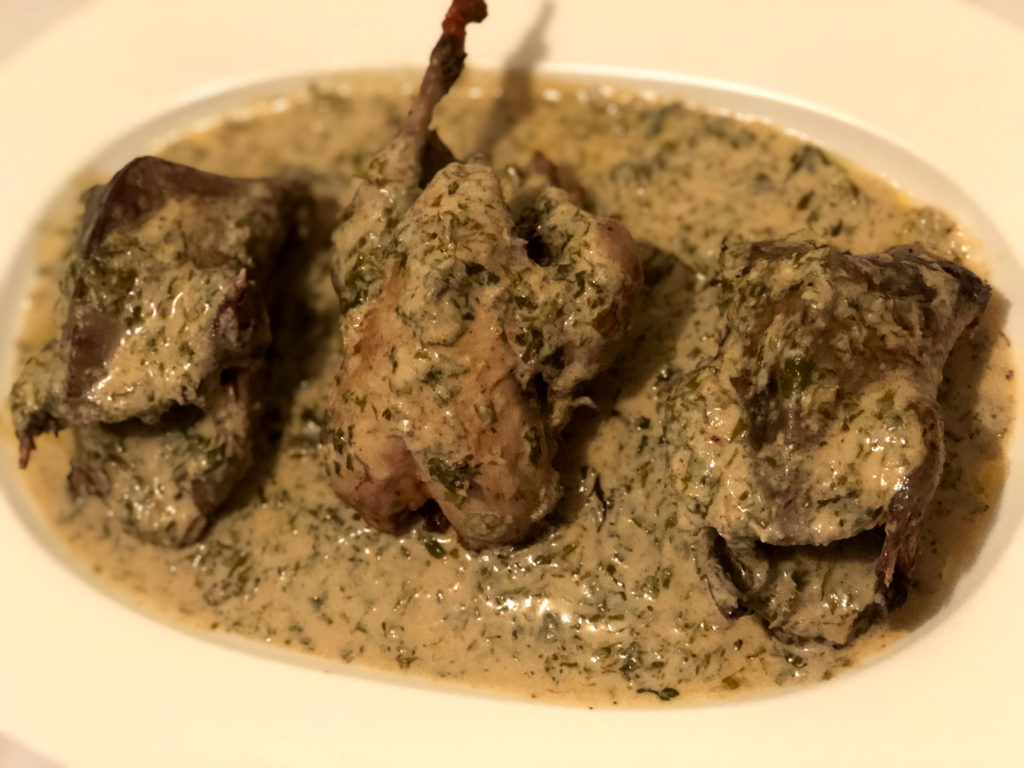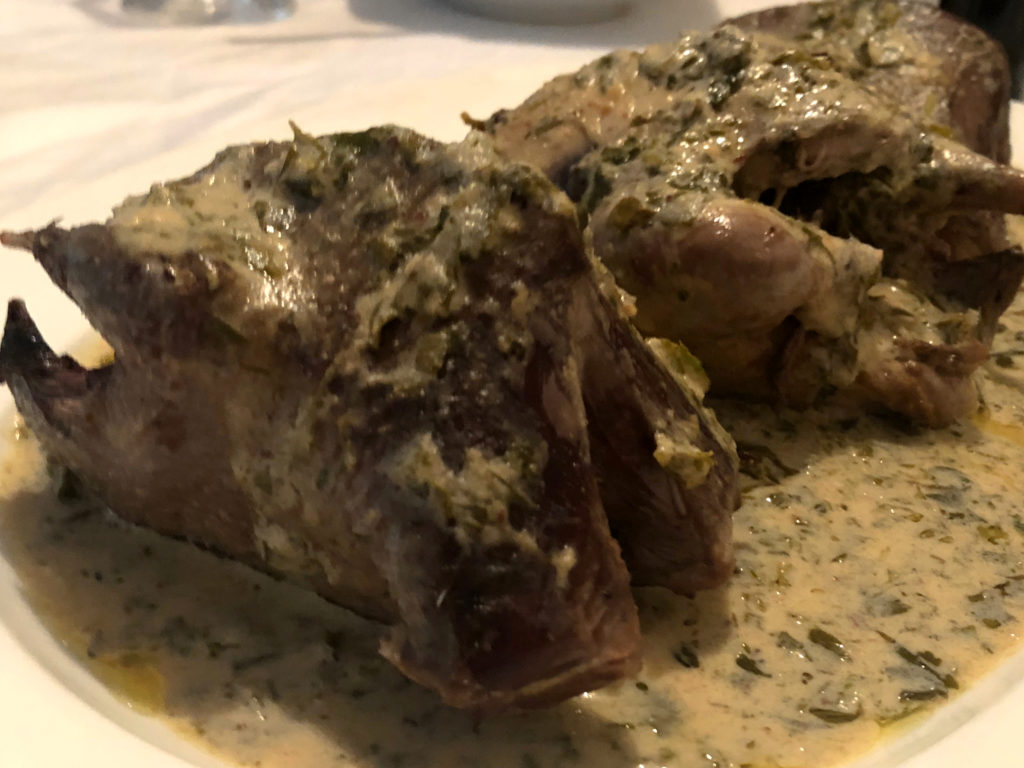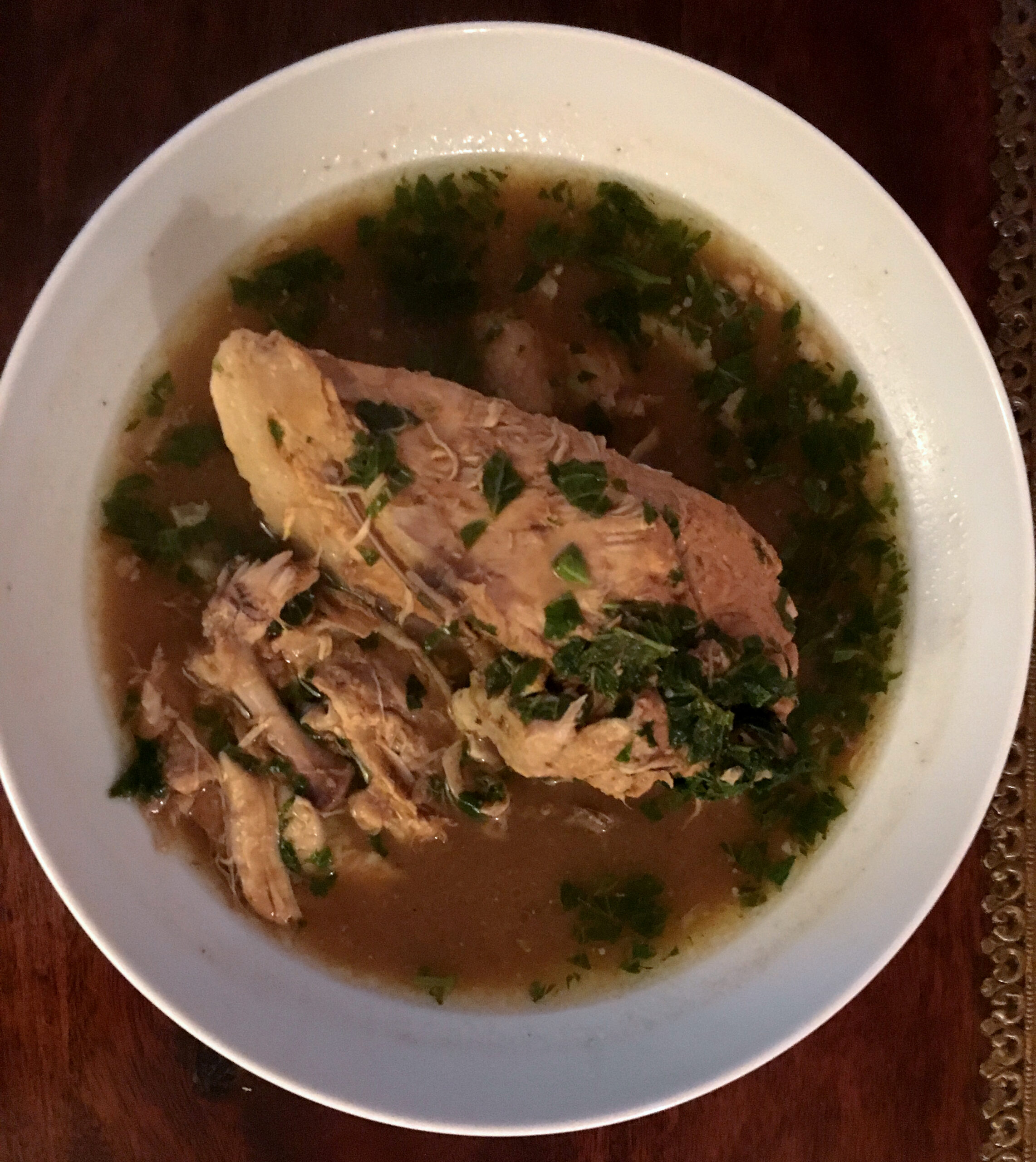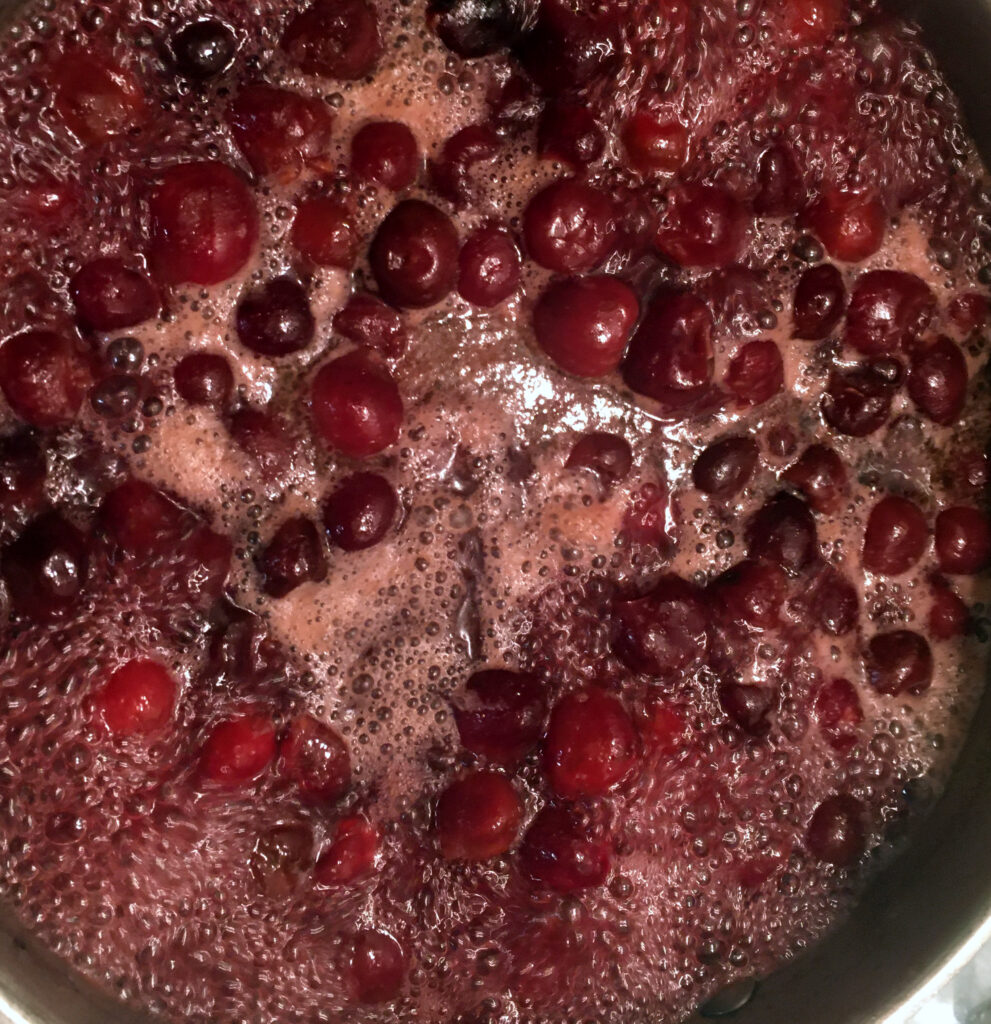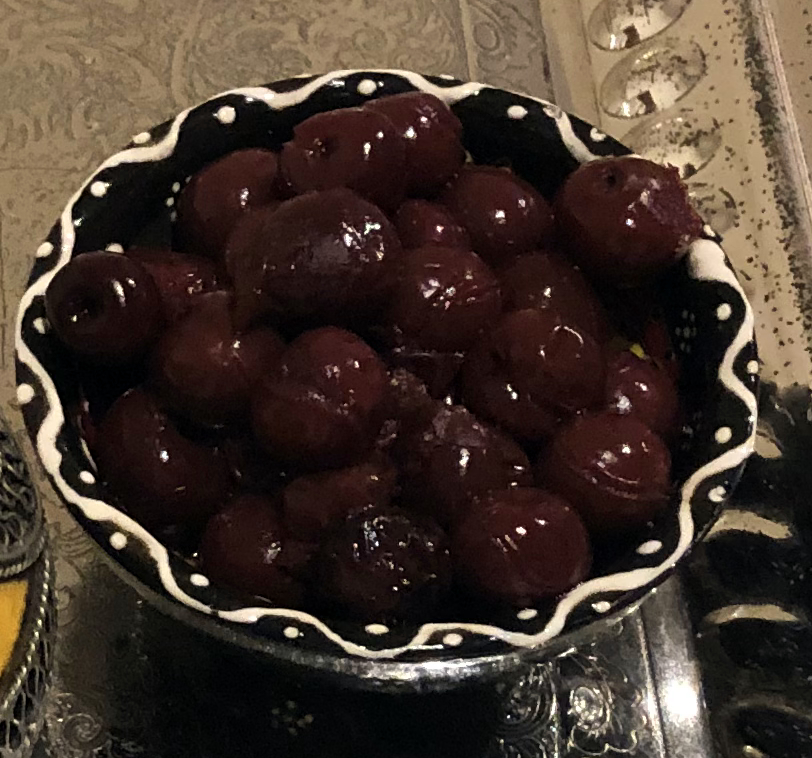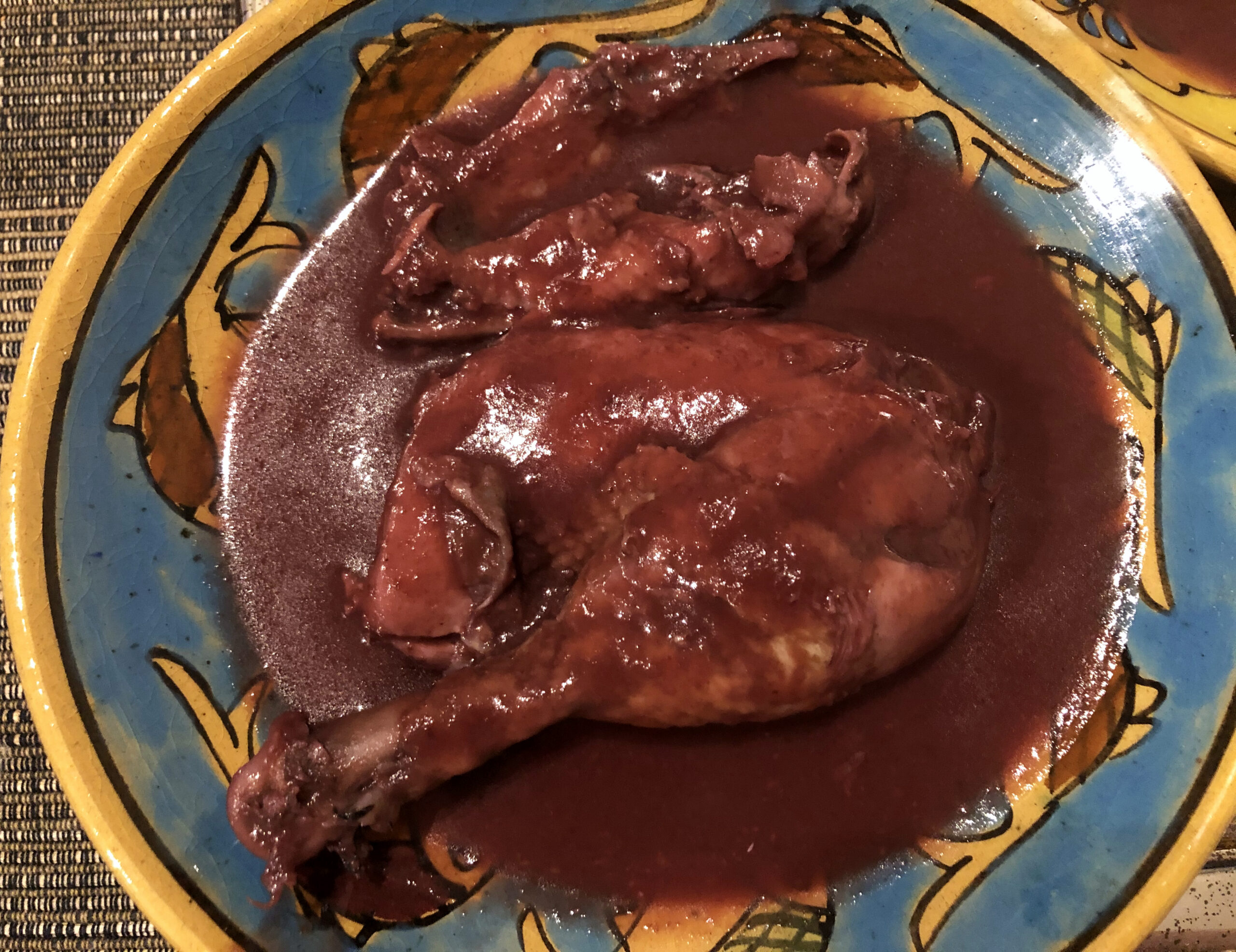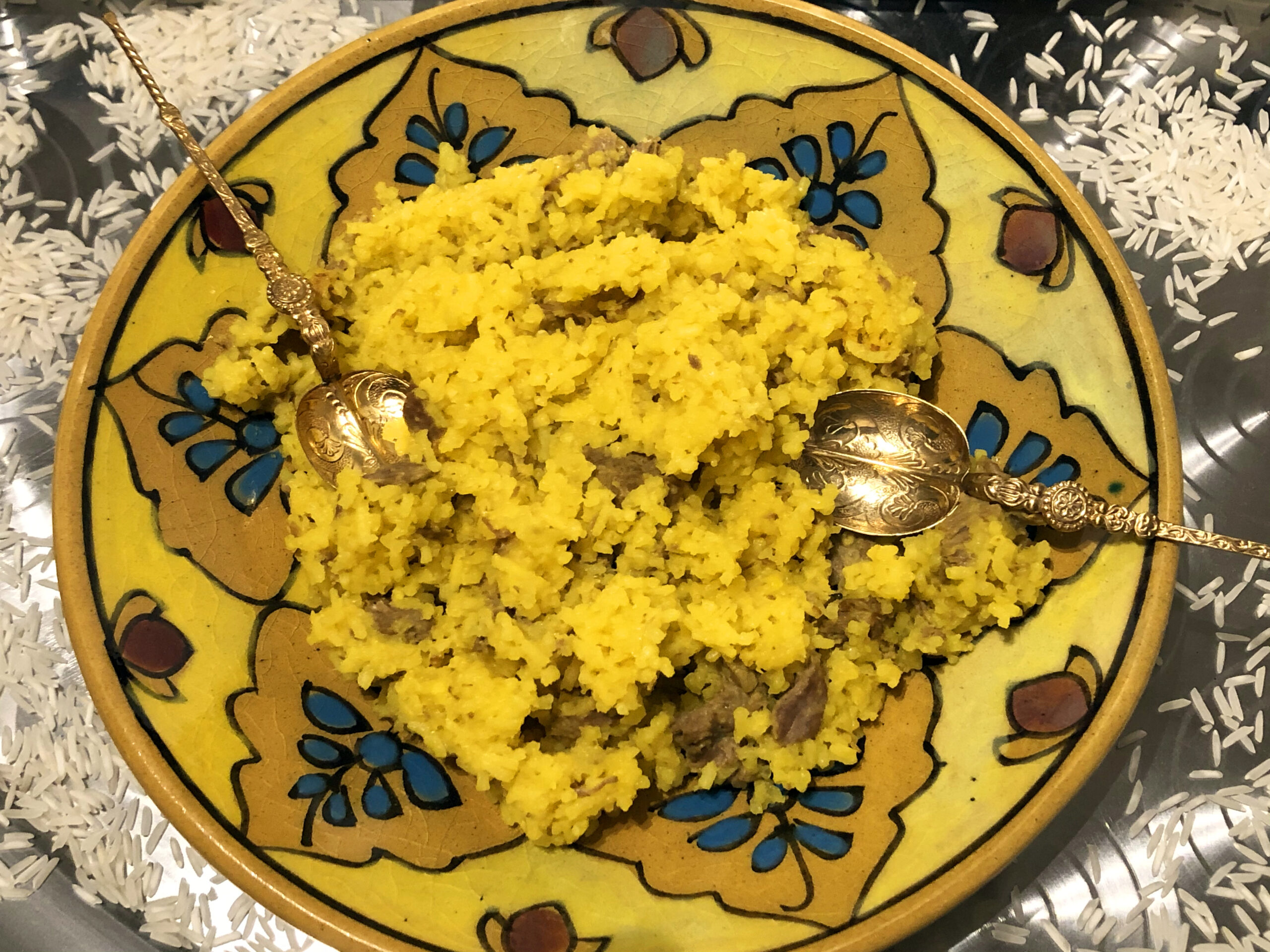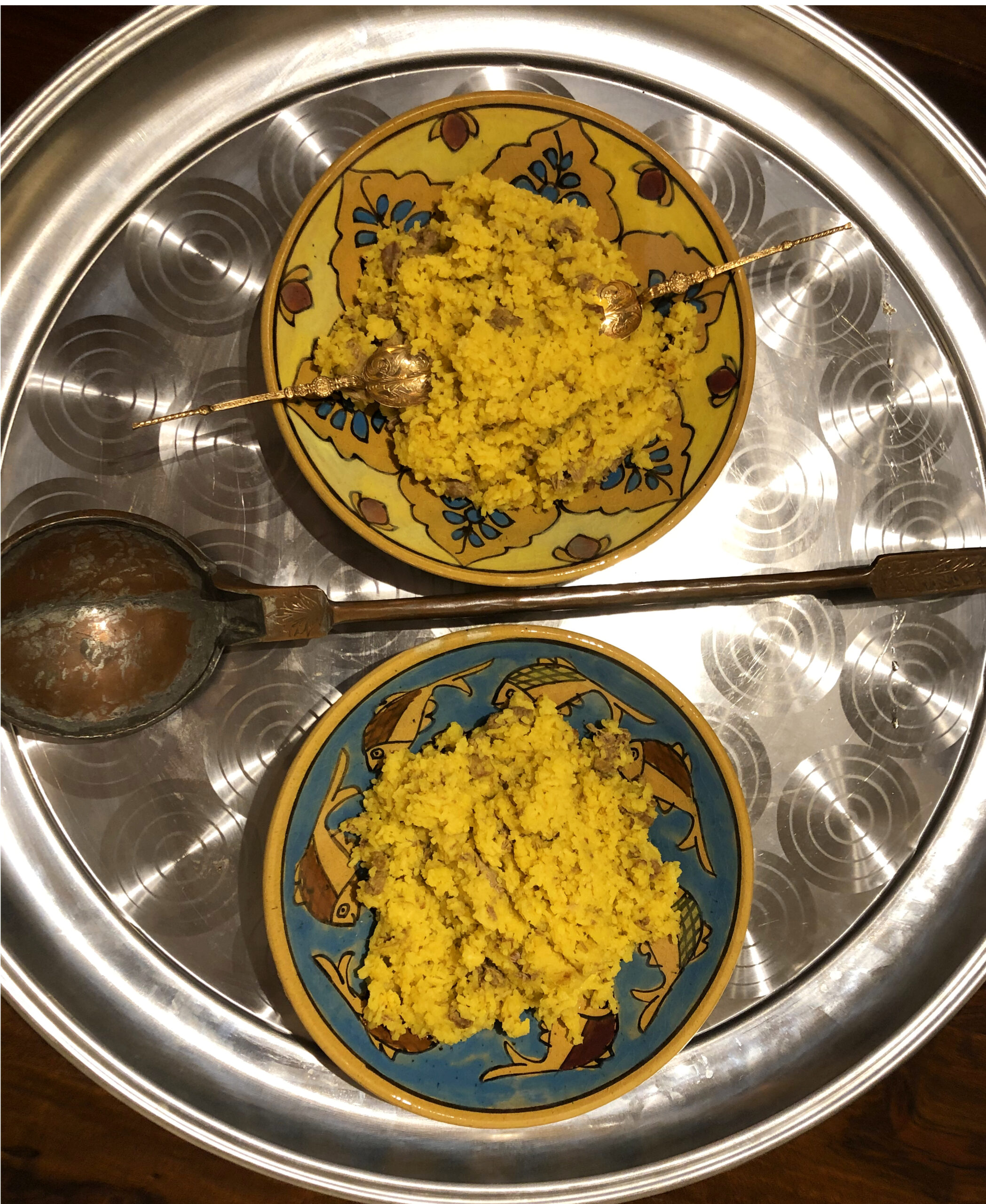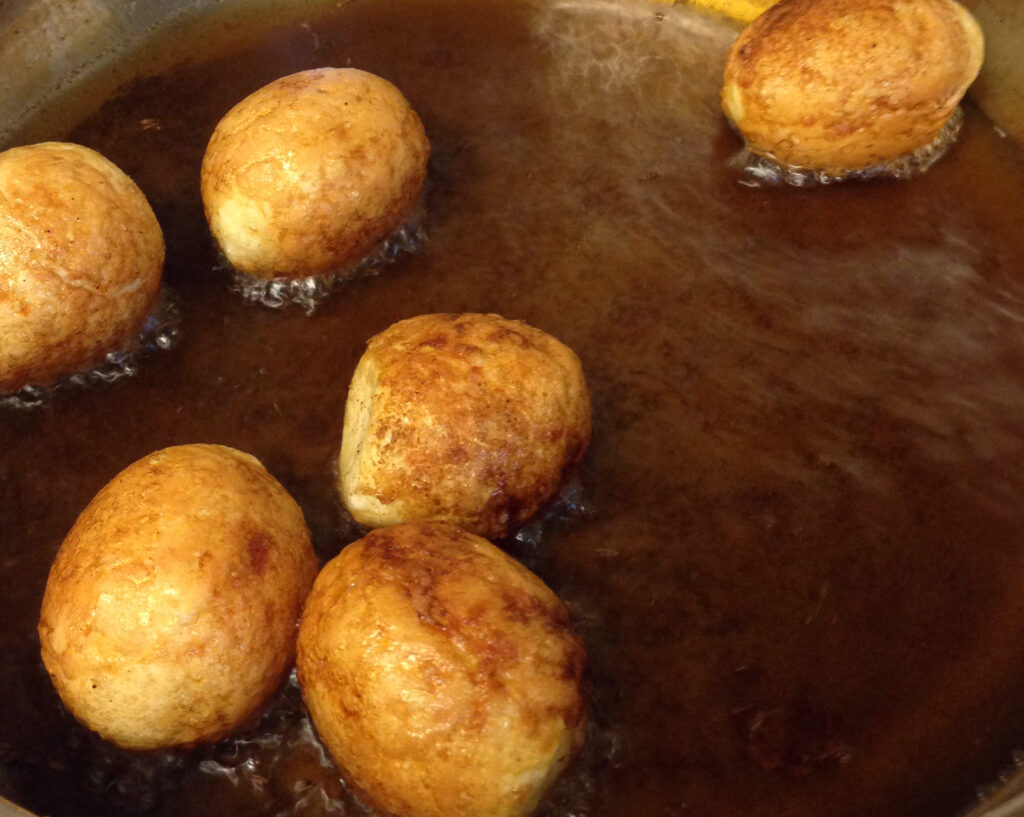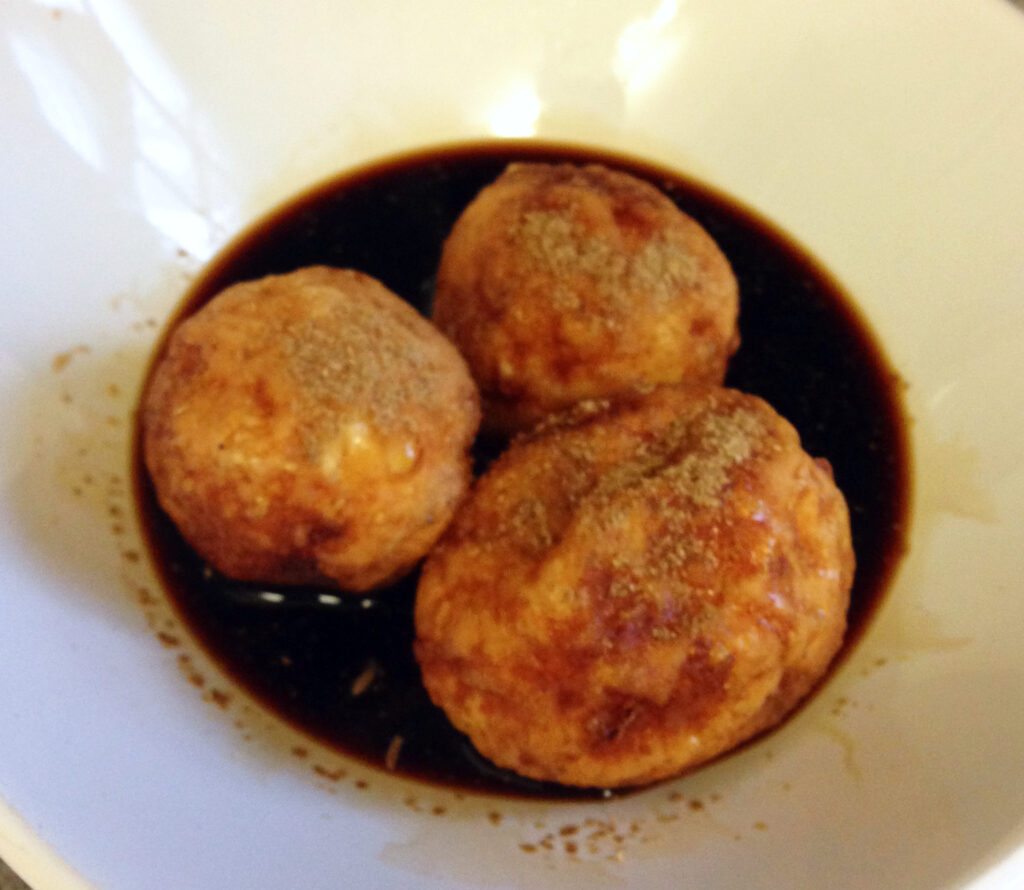A 13th-century Syrian recipe, made by cooking chicken in a sauce of macerated tamarind (تمر هندي, tamr hindī), sugar, mint and various spices.
Cherry chicken
A recipe from a 15th-century Egyptian cookery book. It is one of many fruit stews which were very popular. This dish is very simple to make. The chicken is boiled with galangal and cassia, whereas ripe cherries (قَراصِيا, qarāsiyā) are cooked in the broth with honey, thickened with ground almonds, and scented with rose water, camphor and musk. Serve with flatbread.
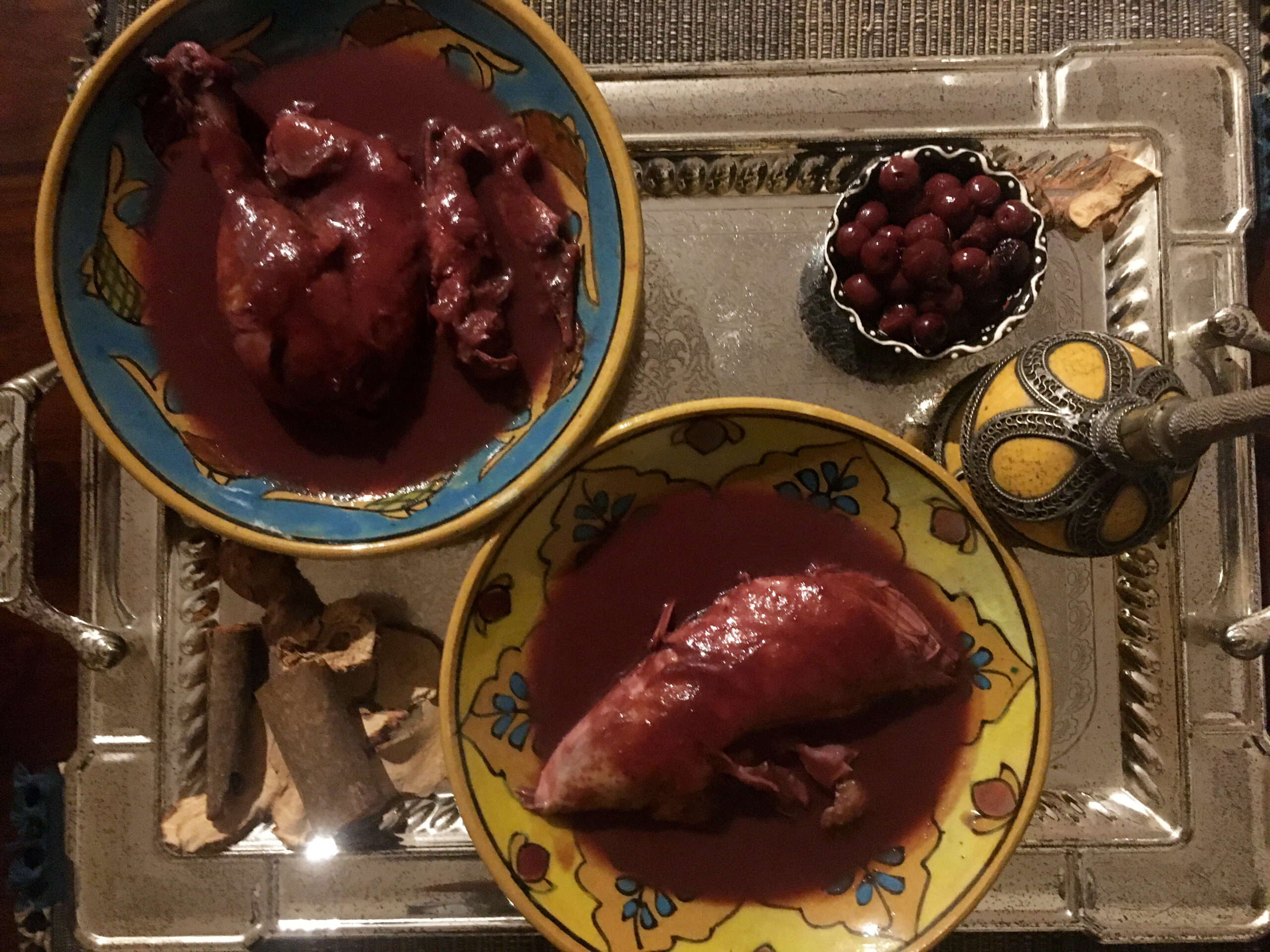
The Nubian Lady (سِتّ النُّوبة)
As the name indicates, this is originally an Egyptian dish, for which there are several recipes. The one recreated here dates from the 13th century and involves frying a chicken in sesame oil and then drenching it in a thick sauce, which is made with almond milk, sugar, and saffron. Afterwards, garnish with jujubes and black raisins that have been macerated in rose-water and mastic. When serving, sprinkle on split pistachios and toasted almond oil. A truly amazing dish, and yes, you can have fries with that, if you like!
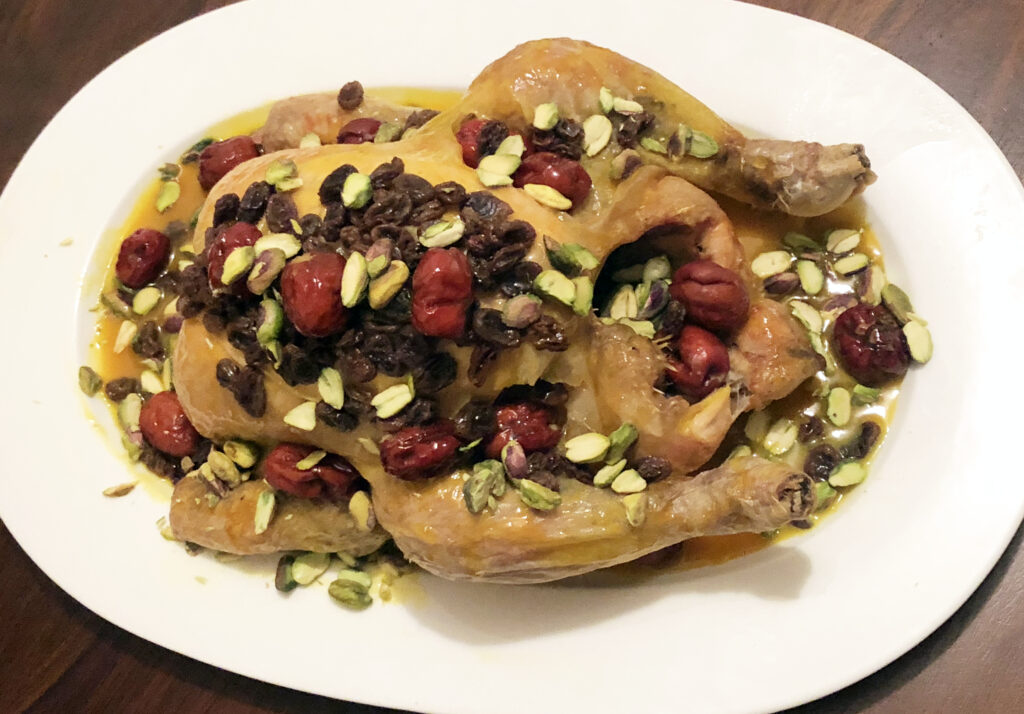
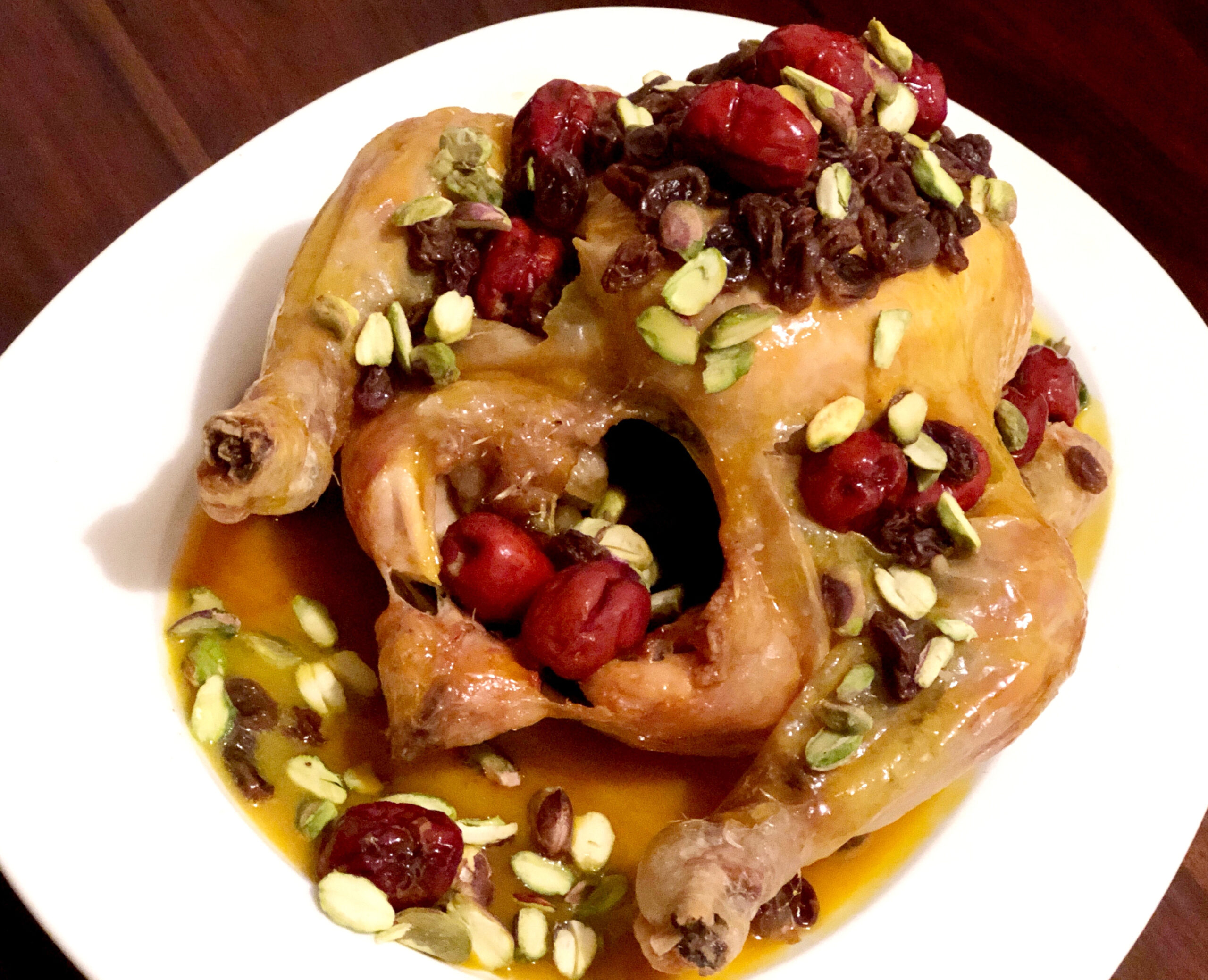
Green zirbaja (زِيرباجة)
The zīrbāja (or zīrbāj) was one of the most popular stews in the Abbasid cuisine, and was usually made with chicken, almonds, and saffron. Its renown was such that it is the plot in one of the stories of the Arabian Nights. This particular dish (from a tenth-century cookery book) is rather unusual in that it is coloured green by means of a sauce made of crushed parsley, rue, and pistachios. Other ingredients include spices like coriander, pepper and cassia.
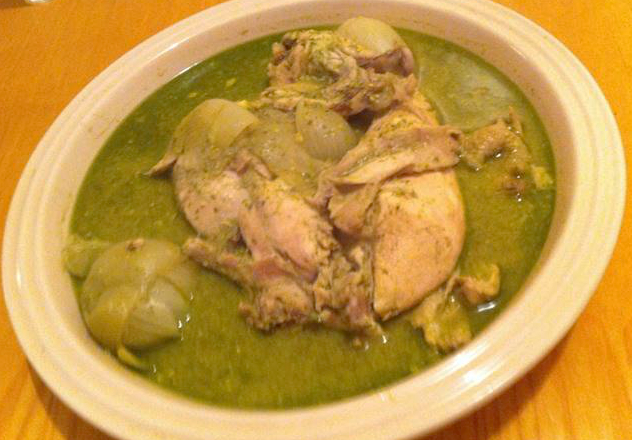
Muhallabiyya (مُهَلَّبِيَّة)
This medieaval classic has survived to the present day, albeit in a slightly different form. It was named after a seventh-century governor of Khorasan (a region stretching from present-day Iran across Central Asia) and involved a type of rice (or milk) pudding. The typical ingredients were rice, milk, sugar, and chicken. Interestingly enough, the dish was also known by an Indian name, bahatta. The Arabs passed the recipe to Christian Europe, where it became known as blanc-manger and was a staple of the mediaeval diet. The modern reincarnations of blancmange and muhallabiyya are no longer made with meat, but a taste of the original dish can be found in the Turkish tavuk göğsü (which translates as ‘chicken breast’). The recipe recreated here is a variant from the fifteenth century and requires meat and saffron-dyed rice, with honey or date syrup (dibs), rather than sugar, providing the sweetness.
Fried hard-boiled eggs
ِA thirteenth-century Syrian recipe, which is as easy to make as it is succulent; after boiling the eggs, they are peeled and fried in sesame oil until the skins turn golden brown. The author recommends serving them with cold vegetable appetizers (bawārid), such as a yoghurt dip or the chicken pâté. In fact, the eggs are equally delicious as a side, or as part of breakfast!
Chicken pâté (بارِدة مَعْجُونة, barida ma’juna)
A 10th-century Baghdadi recipe made with diced roasted chicken, fresh coriander, celery, rue, mint, tarragon, thyme, cucumbers, ginger preserve, egg yolks, wine vinegar, and a variety of spices. It is served garnished with onion, olives and turnip. Great to use on a canapé, or as a sandwich filler!
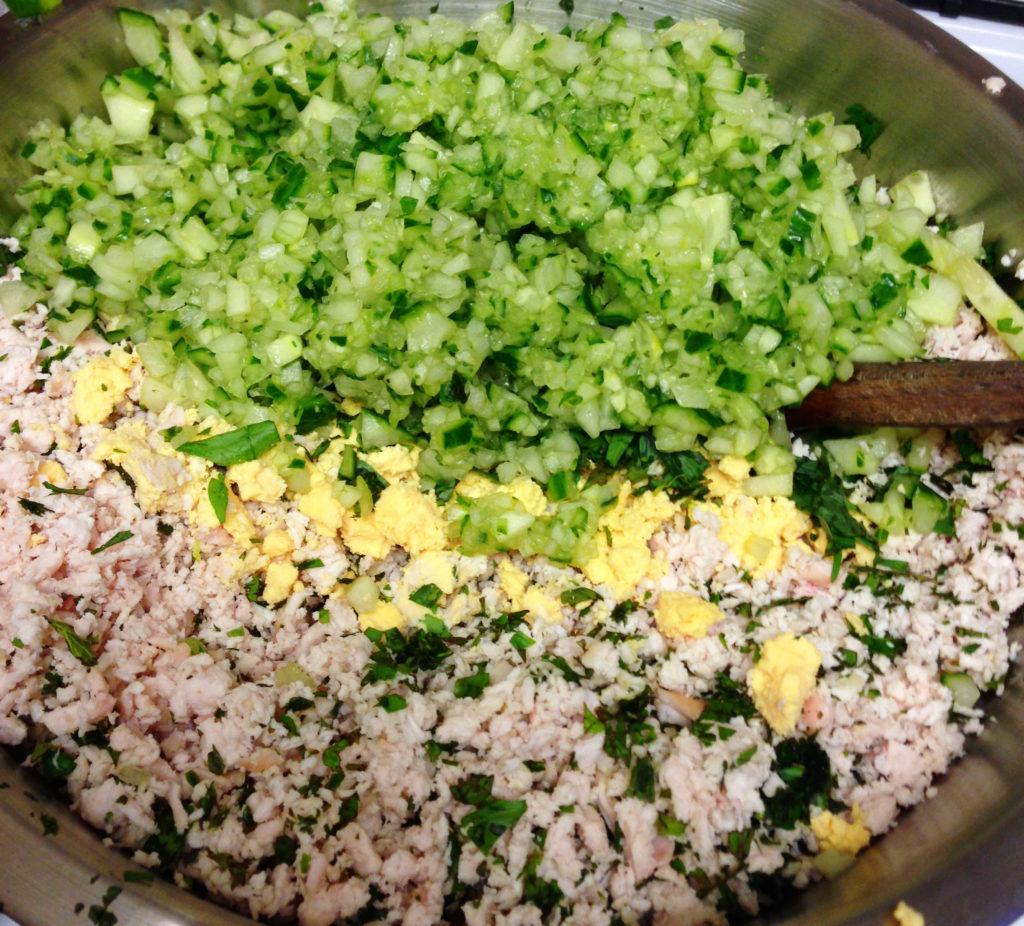
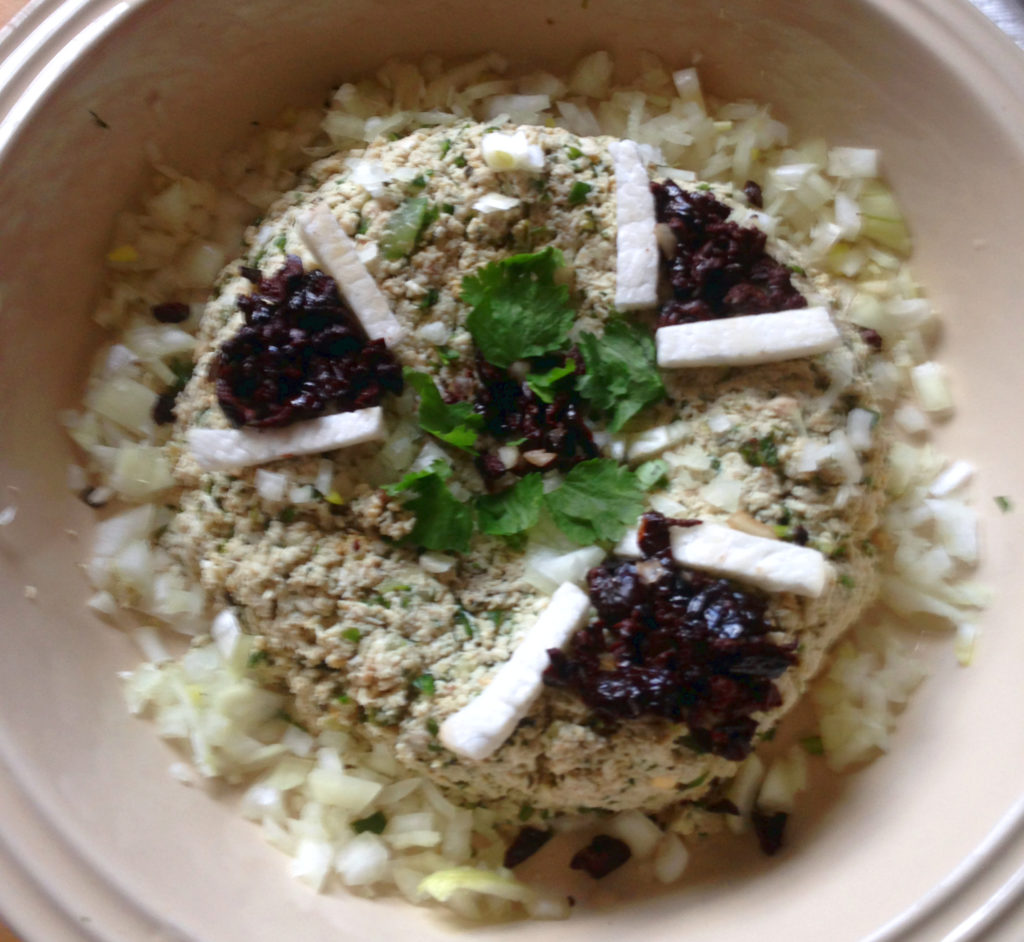
Apricot surprise
Remaining with the apricot theme — and making good use of newly made apricot leather –, this 13th-century Syrian recipe is one of the few that requires it. Chicken meat (fillets is the easiest) is chopped up and fried with onions, coriander leaves and spices, before adding apricot leather (though, the dish can also be made with dried apricots). The anonymous author of the cookery book recommends using Byzantine or Medinese apricot leather, but the one made with apricots from the supermarket tastes amazing, too! Additional ingredients include honey, lemon juice, and mint. A further twist to the recipe is that some of the chicken meat is pounded and shaped into small meatballs (made with spices, mint, coriander leaves, and onions), which are added at the end. Serve garnished with coriander seeds and chopped coriander leaves. [Wuṣla, 2018, No. 6.135]
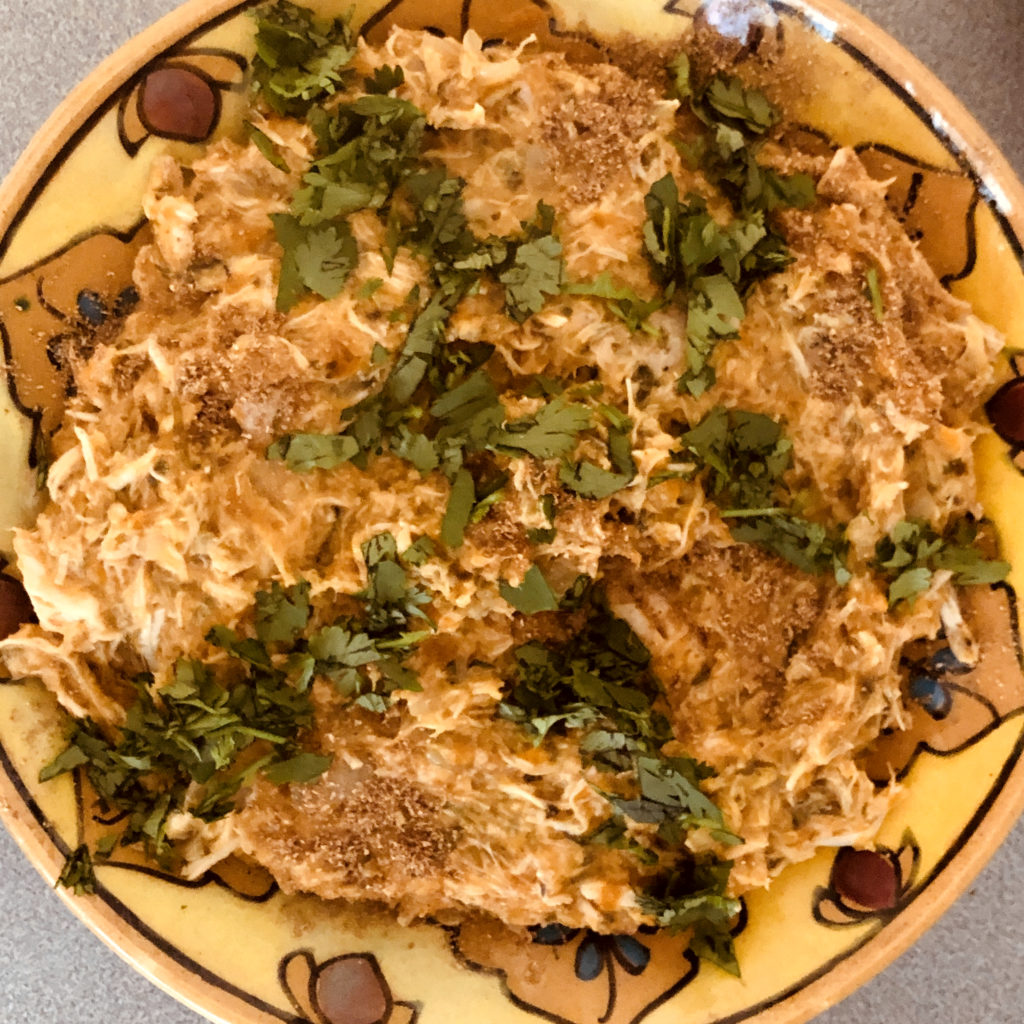
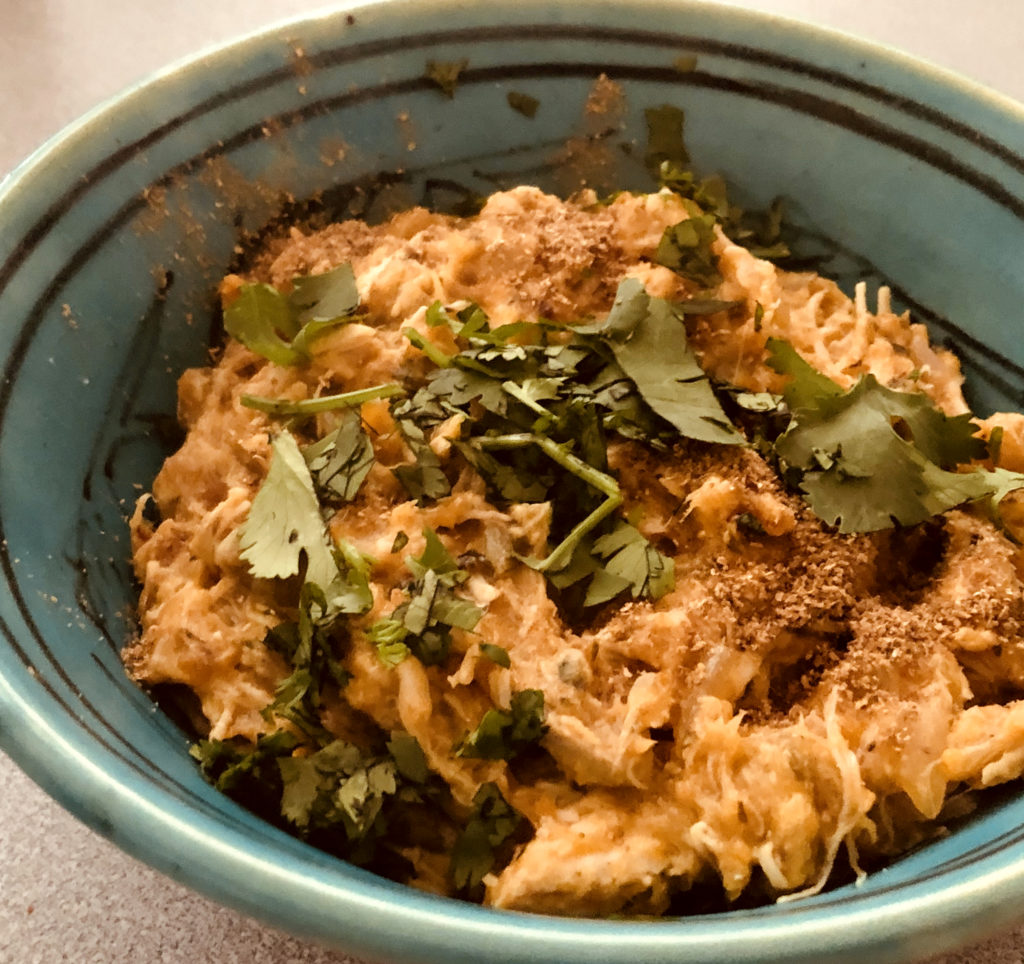
The Caliph’s mustard chicken
This delightful recipe is attributed to the Abbasid caliph al-Wathiq bi-‘llah (‘He who trusts in God’, 842-847CE), who apparently also wrote a recipe book. It is roast chicken smothered in a sauce made with mustard, sugar, (ground) walnuts and asafoetida. Serve decorated with rue and pomegranate seeds.
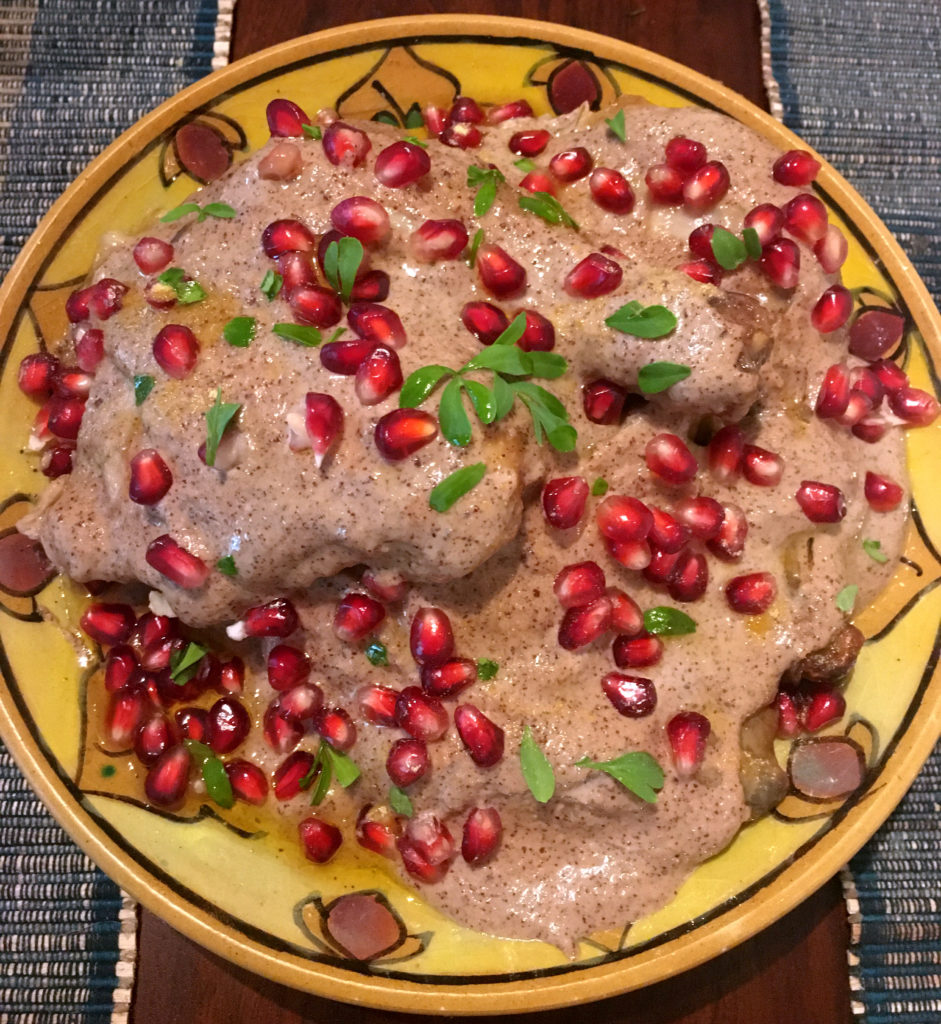
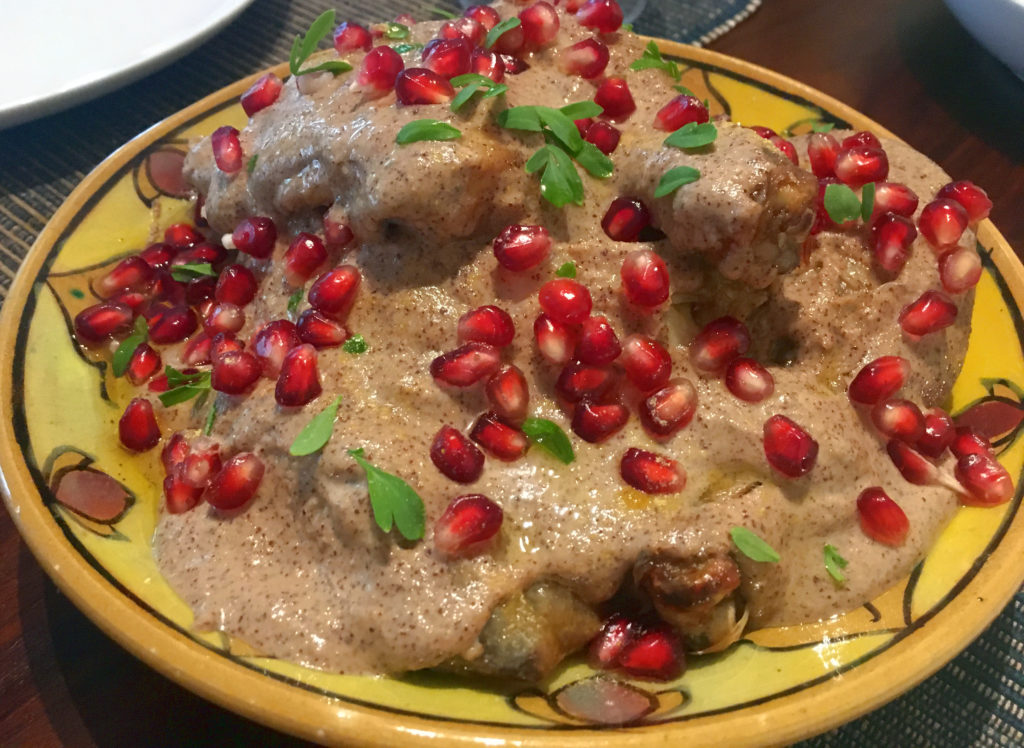
Pigeon in a lemon sauce with herbs
It would seem that pigeon meat was as popular among 13th-century Egyptians as it is today, though the recipe states that you can also use a hen. The rich sauce includes herbs, lemon juice, ground pepper, tahini, (toasted and ground) hazelnuts, and coriander.
